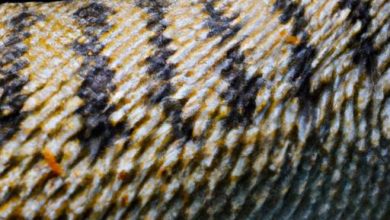Do Peacocks Attack Humans?
Peacocks, with their vibrant plumage and majestic appearance, have long fascinated humans. But what happens when these beautiful creatures cross paths with us? Are they harmless or can they pose a threat? In this article, we will delve into the intriguing question: do peacocks attack humans?
Introduction
Peacocks, known scientifically as Pavo cristatus, are large and colorful birds native to South Asia. Renowned for their iridescent tail feathers and enchanting courtship displays, they have become a symbol of beauty and grace. However, beyond their captivating aesthetics, there lies a hidden side to peacock behavior that often raises curiosity among humans.
When we encounter these magnificent birds in parks, gardens, or even in our own neighborhoods, it’s natural to wonder if they can be aggressive towards us. Are peacocks prone to attacking humans? To shed light on this matter, let’s explore the encounters people have had with peacocks and gain a better understanding of their behavior.
A. Brief Explanation of Peacocks
Peacocks are part of the pheasant family and are renowned for their extravagant plumage. The males, known as peacocks, boast long, iridescent tail feathers, while the females, called peahens, possess a more modest appearance. These birds are known for their distinctive calls and their ability to fly despite the size and weight of their feathers.
B. Overview of Human Encounters with Peacocks
Interactions between humans and peacocks are not uncommon, particularly in areas where these birds roam freely. Many people have encountered peacocks in public spaces, such as parks, zoos, and even residential areas. While some experiences are harmonious and peaceful, there have been instances where peacocks have exhibited aggressive behavior towards humans.
Now that we have laid the foundation, let’s dive deeper into the behavior of these captivating creatures and explore the instances where peacocks have shown aggression towards humans.
Understanding Peacock Behavior
Peacock behavior can be complex and influenced by various factors. To comprehend their potential for aggression towards humans, we must explore their natural instincts, triggers, and general behavior in our presence.
A. Natural Instincts of Peacocks
Peacocks, like many other animals, have inherent instincts that drive their behavior. They are territorial creatures, fiercely guarding their space and resources. Males, in particular, display territorial behavior during the breeding season, as they vie for the attention of peahens. This instinctual need to protect their territory and establish dominance can sometimes lead to aggressive behavior.
B. Factors That May Trigger Aggression
While peacocks are generally peaceful creatures, certain circumstances can trigger aggression. One significant factor is the presence of perceived threats. Peacocks may become defensive and potentially aggressive if they feel their safety or territory is compromised. Loud noises, sudden movements, or invasive actions from humans can trigger defensive responses in these birds.
Additionally, during the breeding season, the display of courtship behavior by males can make them more territorial and potentially prone to aggression. It is essential to recognize and respect these natural instincts when observing or interacting with peacocks.
C. General Behavior Towards Humans
Peacocks typically exhibit a range of behaviors when encountering humans. While some individuals may display curiosity or indifference, others may exhibit caution or even aggression. Their response can vary depending on factors such as previous experiences with humans, their current environment, and their level of comfort.
It is crucial to approach peacocks with respect and caution, allowing them space and not attempting to provoke or disturb them. Understanding their general behavior towards humans can help mitigate potential conflicts and ensure safe interactions for both parties involved.
Now that we have explored the underlying factors that contribute to peacock behavior, let us delve into the instances where peacocks have attacked humans to gain further insights.
Instances of Peacock Attacks on Humans
Peacock attacks on humans, though relatively rare, have been documented in various parts of the world. Understanding these instances can provide valuable insights into the severity of such encounters, as well as any patterns that may emerge based on location.
A. Real-life Incidents and Their Severity
Real-life incidents involving peacock attacks on humans have been reported, ranging from minor scratches to more serious injuries. While the majority of encounters result in no harm, there have been cases where individuals have experienced aggressive behavior from these birds. It is important to note that the severity of attacks can vary based on factors such as proximity, provocation, and the individual bird’s temperament.
B. Analysis of Reported Attacks
Analyzing reported attacks can help us better comprehend the circumstances that led to such incidents. In many cases, peacock attacks occur when humans inadvertently invade their territory or approach them too closely, triggering defensive behavior. Understanding the triggers for aggression can aid in preventing potential conflicts between humans and peacocks.
C. Location-based Patterns, if any
While peacock attacks can happen anywhere these birds are present, there may be location-based patterns worth exploring. Factors such as habitat, population density, and human interaction can influence the likelihood of peacock aggression. By analyzing incidents across different regions, we can identify any potential correlations or variations in behavior.
By examining real-life incidents, analyzing reported attacks, and exploring location-based patterns, we can gain a comprehensive understanding of the instances where peacocks have shown aggression towards humans. In the next section, we will delve into the reasons behind peacock aggression to shed light on this intriguing behavior.
Reasons Behind Peacock Aggression
Peacocks, like any other living creature, can exhibit aggression under certain circumstances. Understanding the reasons behind their aggressive behavior can help us navigate our interactions with them more effectively. Here are some key factors that contribute to peacock aggression:
A. Protecting Territory and Nesting Areas
Peacocks are known to be territorial creatures. During the breeding season, which typically occurs from March to October, male peacocks establish and defend their territories. They perceive humans as potential threats to their nesting areas and may display aggression to protect their territory. It’s essential to respect their space during this time and avoid encroaching upon their nesting grounds.
B. Defense of Offspring
Peacocks are devoted parents, and they fiercely protect their young offspring known as peachicks. When peahens lay eggs and hatch their young, they become highly protective. If they perceive any danger to their chicks, they may exhibit aggressive behavior as a means of defending their vulnerable offspring. Approaching peacocks with peachicks should be done cautiously and with respect for their parental instincts.
C. Misinterpretation of Human Actions
Peacocks may sometimes misinterpret human actions, leading to perceived threats and subsequent aggression. Sudden movements, loud noises, or invading their personal space can trigger defensive behavior. It’s important to be mindful of our actions around peacocks and approach them calmly and respectfully. By understanding their behavior and practicing proper etiquette, we can minimize the chances of miscommunication and potential aggression.
By recognizing and respecting the reasons behind peacock aggression, we can coexist peacefully with these magnificent birds. In the next section, we will discuss safety measures that can help avoid peacock attacks and ensure a harmonious interaction between humans and peacocks.
Safety Measures for Avoiding Peacock Attacks
Peacocks, like any other wild animals, have their boundaries and may become aggressive if they perceive a threat. To ensure your safety and maintain a peaceful coexistence with these magnificent birds, it is essential to follow some safety measures and understand their behavior cues.
A. Maintaining a Safe Distance from Peacocks
The first step in avoiding peacock attacks is to maintain a safe distance from them. While it may be tempting to approach these beautiful creatures, it’s important to respect their space and not invade it. Keep in mind that peacocks are wild animals with natural instincts, and getting too close can trigger their protective response.
B. Tips for Preventing Potential Aggression
To prevent potential aggression from peacocks, consider the following tips:
-
Avoid feeding them: Feeding peacocks may encourage dependency and alter their natural foraging behavior. It’s best to let them find their own food sources in their natural habitat.
-
Do not provoke or chase them: Making sudden movements, loud noises, or chasing peacocks can agitate them. Remember to maintain a calm demeanor and give them their space.
-
Secure your belongings: Peacocks may be attracted to shiny objects, such as jewelry or small reflective items. Keep your belongings secure and avoid displaying items that may catch their attention.
-
Protect your pets: If you have pets, ensure they are leashed or supervised when in close proximity to peacocks. Sudden interactions between pets and peacocks can lead to potential conflicts.
C. Understanding Their Body Language
One of the keys to preventing peacock aggression is understanding their body language. By observing their behavior cues, you can gauge their mood and intentions. Some important body language signs to be aware of include:
- Displaying their tail feathers: When a male peacock spreads its vibrant tail feathers and performs a courtship display, it is a sign of attraction and not aggression.
- Hissing or making warning sounds: If a peacock hisses or makes warning sounds, it is best to keep a safe distance as it may be feeling threatened.
- Raised feathers and wings: Raised feathers and wings can indicate aggression or a defensive posture. It’s advisable to retreat slowly and give the peacock space if you notice these signs.
By being mindful of these safety measures and understanding peacock behavior, you can enjoy their presence while minimizing the risk of any potential aggression. Remember, it is our responsibility to coexist respectfully with these magnificent creatures.
Conclusion
After exploring the intriguing question of whether peacocks attack humans, we have gained valuable insights into the behavior of these magnificent birds. While peacock attacks on humans are relatively rare, it is essential to understand the factors that may trigger aggression.
Throughout this article, we have learned that peacocks may exhibit aggression when they feel their territory or nesting areas are being threatened. They may also become defensive if they perceive a potential danger to their offspring. However, it is crucial to note that not all peacocks will display aggressive behavior towards humans.
To ensure our safety and maintain a peaceful coexistence with peacocks, it is advisable to maintain a safe distance and avoid provoking them. By understanding their body language and respecting their space, we can minimize the chances of any potential confrontations.
In conclusion, while peacock attacks on humans are rare occurrences, it is essential to approach these magnificent birds with caution and respect. By appreciating their beauty from a safe distance and showing them the respect they deserve, we can enjoy the presence of peacocks while ensuring our safety.
Remember, at vegetable.kenhtech.com, we strive to provide you with informative and engaging content. If you have any more questions or want to explore other fascinating topics, feel free to browse our website for more insights.
Bolded text: vegetable.kenhtech.com
Conclusion: So above is the Do Peacocks Attack Humans? article. Hopefully with this article you can help you in life, always follow and read our good articles on the website: vegetable.kenhtech.com



